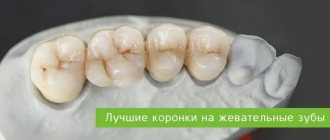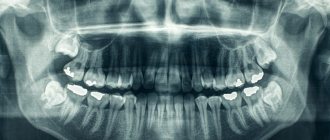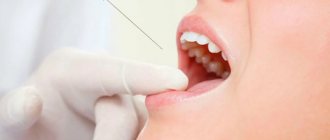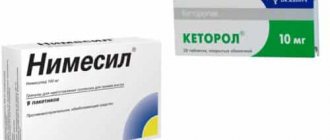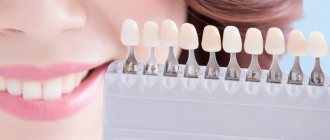- About the method
- Indications
- Advantages and disadvantages
- Prices
- Doctors
- Reviews
Piezosurgery
- this is a modern trend in dentistry associated with the need to remove hard tissues - teeth, roots, jaw bone tissue.
If surgery is indicated for you, we suggest you choose a progressive technique and see the benefits of ultrasound technology at the ROOTT clinic in Moscow.
Advantages
Practicing dentists who use ultrasound in daily practice have identified a number of advantages of piezosurgery:
- Predicted result. Until the early 90s, many doctors refused to perform dental implantation, citing the risk of complications during surgical procedures. Previously, implantation was technically difficult. Doctors invented different ways of doing it to help patients, but not all of them worked. When ultrasound came into widespread use, things started to improve. Over two decades, specialists have accumulated enough knowledge and experience to ensure that today this procedure has a guaranteed result.
- Atraumatic. Although tooth extraction is one of the most basic surgical procedures performed by a dentist in the oral cavity, it can sometimes be difficult to perform. Especially when it comes to wisdom teeth. Often they lie deep in the bone tissue, and the doctor has to use not only forceps, but a drill to open access to the “hiding” wisdom tooth. The more complex the operation, the greater the chance of injury, and such situations happen even to the most experienced surgeons. But with the help of ultrasound, the risks of complications are minimized.
- Quiet postoperative period. If the operation is successful, this does not guarantee normal wound healing: swelling or bleeding may occur. During operations with a piezotome, there may be no bleeding at all. The piezone also provides temperature control through water cooling. Controlled irrigation avoids overheating of the bone tissue, which contributes to its faster recovery.
- Painless. When performing surgical manipulations in the oral cavity, pain from the surgeon’s actions is rarely felt. Most often, pressure applied by the doctor or stretching of soft tissues is felt. In the case of a piezotome, this will not happen, since the doctor has only one instrument in his hands. Local anesthesia will be sufficient to make the operation comfortable.
- High speed of operation. The procedure using this technology is reduced by a third. Due to the ease of use of the equipment, the stages of the procedure take less time.
- Aseptic processing. Since the device is not connected to the central water supply, but has a water tank, the dentist has the opportunity to fill in another liquid. The operation can be performed with a solution of chlorhexidine or miramistin.
- High precision of the operation. During manipulations using ultrasound, incisions are made without pressure or effort, only using back and forth movements. This incision is selective, thin and smooth, allowing the volume of bone tissue to be preserved.
- Operation in hard-to-reach places. This is especially important when removing wisdom teeth. The oral cavity is small, and the dentist does not have the opportunity to increase surgical access: no one cuts the cheeks to get to the tooth. The piezotome has a convenient shape so that the doctor can work in places where this would be difficult under normal conditions.
Difference from conservative practice
Previously, a scalpel, drill and cutters were used during surgery. Now - advanced ultrasonic equipment - piezotome. The device does not contact directly with tissues, but works at a distance. Ultrasound acts in a targeted manner, cutting through the desired area. The surrounding soft tissues and nerves are not affected.
The piezotom treats hard-to-reach areas that the doctor cannot reach with a drill. Simultaneously with the impact of ultrasound, the surgical area is cooled to minimize discomfort.
Ultrasonic vibrations quickly destroy hard tissue in the direction specified by the doctor, so the procedure is short-lived.
Contraindications
There are no absolute contraindications for such procedures. It all depends on the person’s condition, so the doctor chooses the method of treatment during examination. Usually doctors offer several options for solving problems, and the patient chooses the one that is most convenient for him.
Temporary contraindications include acute inflammatory processes, colds, pregnancy and lactation. If a patient has chronic diseases of the cardiovascular, nervous or endocrine systems, the surgeon can refer him for consultation to an appropriate specialist.
Standard tooth extraction or using ultrasound?
Ultrasound tooth extraction - an innovative technique in Moscow? Definitely yes. Should the choice of ultrasound technique be a priority if it is not possible to leave a unit in the dentition? In this case, is it worth removing wisdom teeth with ultrasound? Absolutely yes. After all, an operation performed with a piezo scalpel prevails over the standard technique. Is it painful to remove teeth with a piezo scalpel? No, the technique is completely atraumatic.
Considering all the nuances, the price in Moscow for ultrasound tooth extraction is quite high: extracting 1 unit will cost about 5 thousand rubles. Classic removal will cost half as much.
The result of treatment primarily depends on the professionalism of the doctor. First, you need to choose a specialist you can trust. In innovative dentistry "Implantmaster", our specialists are constantly improving and using the latest technologies.
Stages of the operation
Most often, piezosurgery is used when it is necessary to extract a wisdom tooth. How the procedure will go:
- Anesthesia. To prevent pain during the procedure, the dentist makes injections into the soft tissue near the disturbing tooth. The doctor calculates the dose of anesthetic based on the patient’s health, the time for the operation and its volume. After 10-15 minutes, sensitivity disappears. This is the most important stage, since allergies to the anesthetic are possible.
- Gum section. In case of complex extraction, the tooth is located under the gum and bone tissue. To get to it, surgeons create access layer by layer. The gum incision is made using ultrasound. After the incision is made, the gum is moved slightly to the sides so as not to interfere.
- Opening the bone. Since the tooth lies in a follicle inside the jaw, the surgeon makes a hole in the bone, after which the tooth becomes visible to the naked eye.
- Removal of a tooth. Often the reason for getting rid of the “eights” is their incorrect location, when it not only cannot cut through, but also puts pressure on the neighbor. It is difficult to obtain such a tooth, so the surgeon saws it into several parts. The eighth teeth are the furthest in the oral cavity, so it is impossible to extract the entire tooth: the necessary tool cannot reach that far. This stage is the most difficult.
- Stitching the wound. After removal, a large hole remains. The doctor places a bandage on the bottom of the hole, which will stop the bleeding and disinfect the wound. There are simple iodoform turundas or modern self-absorbing sponges. After this, the doctor brings the edges of the hole together and applies sutures. They can resolve on their own, or they can be removed by a doctor.
Our prices
| Code no. | Name of procedures | Unit of measurement | Cost, rub. |
| 300 | Application anesthesia | 100,00 | |
| 301 | Infiltration anesthesia, conduction | 450,00 | |
| 608* | Removal of impacted teeth using a piezoelectric device | 1 tooth | 10 000,00 |
| 628 | Free gingival autograft palatal fence | 5 000,00 | |
| 638 | Installation of the INNO system implant (Korea) | 1 PC. | 32 000,00 |
| 639 | Placement of the gum former with gingival contour plastic surgery | 5 480,00 |
* The prices indicated on the website are not a public offer. The exact cost of treatment can only be determined at an appointment with a doctor.
Prices for treatment in Korolev full price list
Share on social media networks:
Article Expert:
Marinova Larisa Nikolaevna
Implantology, surgical dentistry. Dental implantation systems: Astratech, Biohorizons, Bicon, Implasa Hochst, Miss, Straumann. Sinus lifting (open and closed), bone grafting. Periodontology: frenuloplasty and vestibuloplasty, lingual frenuloplasty, recession plastic surgery, flap surgery.
Work experience 25 years
Recommendations
After the procedure, the dentist gives recommendations. Immediately after removal, the patient is given cold to the cheek: this will prevent swelling. When the effect of anesthesia wears off, the patient may experience pain for some time - this is normal. In this case, you can take the painkiller that the doctor suggested.
For 3-5 days, it is recommended to eat food at a neutral temperature, without heat or spices. Usually on the third day the patient is invited for a follow-up examination.
Saliva makes wounds in the mouth heal much faster. Only the first day will be the least accepted. If you follow the dentist's recommendations, the postoperative period will pass quickly and calmly.
- Recommendations after surgery .pdf
- Postoperative recommendations .pdf
Rehabilitation period
Based on histological studies, the mechanisms of wound tissue healing after excision were studied. Studies have shown that patients do not experience necrosis at the incision site. Bone cells are easily injured. After all, the dentist’s movements differ from classical movements, and the incision is made using a microvibration attachment. In this technology, it is important that a balance is found between the speed of movement of the nozzles and the applied pressure. The antibacterial nature of the vibrations reduces the risk of complications in the postoperative period to zero. As a result, the recovery period is significantly reduced.
After the operation, patients feel comfortable. They do not have pain or swelling that remains after using the drill. The oscillatory movements of the nozzle reduce to zero complications that may arise after surgery. The period of tissue growth is reduced, which ensures accelerated recovery of the patient. It is important that the patient strictly follows all the doctor’s recommendations, does not touch the wound with his tongue, does not suck out the blood clot, and does not become hypothermic. If the patient is concerned about anything, you need to tell the attending physician about it. Be sure to undergo follow-up inspections. For preventive purposes, you should visit the dentist 2-3 times every 12 months, even if nothing bothers you. After all, only a specialist can detect many pathologies of the oral cavity in the initial stages.
Rehabilitation after tooth extraction with ultrasound
For recovery after surgery to be effective and comfortable, you must:
- Apply a cold compress to the site of tooth extraction;
- the gauze pad should be removed after the recommended time;
- Take painkillers strictly according to the doctor's prescription.
What is not recommended to do:
- consume hot food and drinks 2-3 hours after manipulation;
- visit baths and saunas;
- heat the intervention site;
- physical exercise.
Application of piezo apparatus in dentistry
- Periodontology. Using a piezosurgical device, the gums are carefully peeled off. It is used for various manipulations on tissues, when excising the gums with a tooth hood.
- Operations to save teeth. Removal of areas damaged as a result of infectious diseases, other consequences - cystectomy, apiectomy.
- Surgery. Removal of a tooth. Resection of growths. Dental implantation. Sinus lift. Removal of implants. Bone block transplantation. Splitting of the alveolar ridge.
Installing an implant immediately after tooth extraction
Single-stage dental implantation - the implant is installed after tooth extraction, in one visit. They administered anesthesia, extracted the tooth, and immediately installed an artificial rod in the socket. As a result, complex surgical procedures were combined.
Typically, implantation is carried out several months after removal, when the bone has recovered.
Qualified implant surgeons at the Implantmaster clinic perform both standard and simultaneous implantation. Our doctors use advanced materials and technologies, such as Straumann implants. They take 1.5 months to engraft into the jawbone; they can be implanted with a minimal amount of bone. We also install Osstem implants, these are the best budget implants made in Korea.
Piezo device Mectron Piezosurgery White at Lucky Smile dentistry
Piezo apparatus in dentistry is a modern tool for performing operations, plastic surgery, eliminating nasal defects, removing tumors and treating various diseases. The relatively low price of the device makes such surgical intervention accessible to many people. Moreover, the results of operations are much better than using traditional means. In addition, the consequences are minimized and there are no side effects.
The use of equipment in dentistry is absolutely safe and does not carry the risk of injury; the price of the service is discussed during the consultation. During the operation, the doctor can control and change the degree of exposure to ultrasonic waves depending on specific tasks. An electronic feedback system constantly monitors the ultrasound power. The handpieces and its hose are sterilized after each use.

